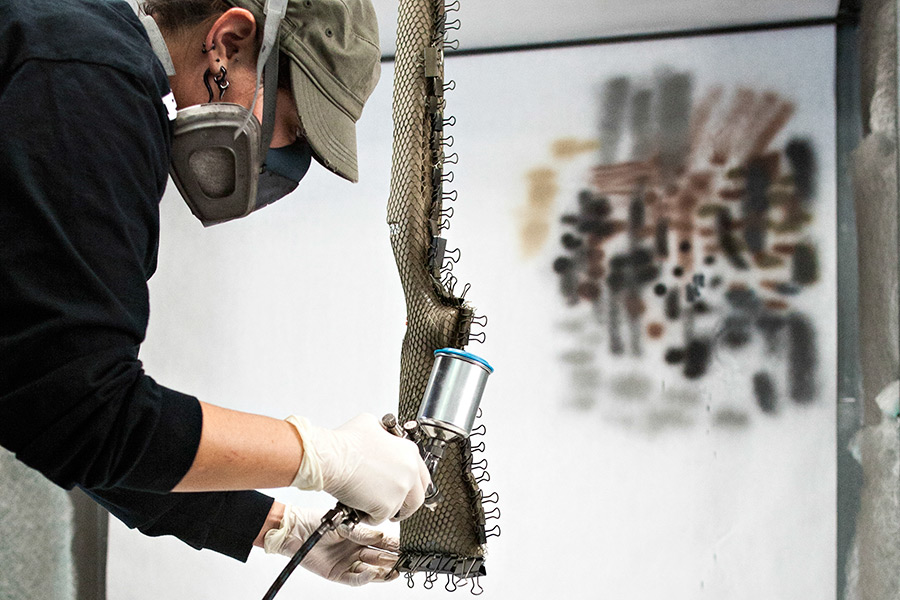As the Flathead Valley continues to gain momentum after the blows dealt by the recession, manufacturing, one of the valley’s mainstay economic drivers, continues to build.
Manufacturing covers a wide array of businesses, from food production to metalworking and firearms to the timber sector. It’s a huge piece of the Flathead’s economic base, and the confidence building from the valley’s comeback from the recession has extended to the industry.
The Kalispell Chamber of Commerce dedicated October to manufacturing, with multiple tours to various facilities throughout the valley, and president Joe Unterreiner said the outlook is promising.
“It’s always a very dynamic industry,” Unterreiner said.
Area businesses continue to gain footholds and grow, Unterreiner said. According to the Bureau of Business and Economic Research at the University of Montana, the manufacturing sector across the state grew by 3.6 percent last year, bringing it to 92.2 percent of the levels seen in 2007.
In the Flathead, manufacturing worker earnings in 2010 accounted for $148 million, and increased by 10 percent to $163 million in 2012. From 2012 to 2013, manufacturing payrolls in the county increased by just under $10 million.
Surveys of manufacturers in 2013 showed optimism for 2014, and the BBER predicted higher sales and greater profits for many of these businesses.
Brad Eldredge, director of Institutional Research, Assessment, and Planning at Flathead Valley Community College, said he’s seen the valley’s manufacturing sector largely follow the predicted outlook from earlier in the year.
“I think it’s pretty important,” Eldredge said. “It kind of has an outsized importance.”
That means most of the manufacturing that takes place in the Flathead creates products that will sell outside of the valley; there isn’t a market here for many of the products.
And with most of the manufacturing sales coming from outside the valley, more outside dollars are ending up in the local economy, he said.
“It has a big multiplier effect,” Eldredge said.
Existing manufacturing businesses are seeing increases in business, facilitating growth and expansion. At SmartLam, the Columbia Falls-based cross-laminated timber manufacturer, business is steady enough for the company to move on its plans to relocate to a new building.
General manager Casey Malmquist said the new plans, which are still in their nascent stages, call for a building between 120,000 and 160,000 square feet, potentially with its own rail connector.
“We’ve been working on this for a while,” Malmquist said. “It’s time for us to get a bigger site.”
The new site would allow for a new equipment line the company is designing, and once that is in place, the company could start producing existing orders while moving the current machinery to the new site.
Currently, SmartLam produces about 800,000 board feet of product per month, Malmquist said, and with the new building and equipment, the company will likely triple that.
With more production power, SmartLam will be able to expand into other markets, Malmquist said, such as the construction materials market.
Being part of SmartLam has introduced Malmquist to the manufacturing sector in the Flathead, he said, and what he’s discovered has impressed him.
“This has started opening my eyes to the local manufacturing industries,” he said. “There’s a lot of really cool stuff happening here.”
At Proof Research, the firearms manufacturer located outside of Columbia Falls, a stable economy has allowed for a shift in command. Larry Murphy, formerly of Semitool, has taken over as CEO, and brought on board a collection of former Semitool engineers.
Derek McDonald, chief marketing officer at Proof, said the latest evolution for the company would likely prove to enhance its status as a carbon-fiber products leader.
“We have a lot of phenomenal opportunities that we’re developing and working on right now,” McDonald said. “(We make) the first and only carbon-fiber barrel that’s ever been approved for military use.”
That technology means lighter weapons for the military, and it could translate to other uses, such as aviation and vehicles. Proof acquired Ohio-based Performance Polymer Solutions last October, which will provide more room for growth.
“We are a carbon-fiber technology leader,” McDonald said. “There’s no one in the industry giving us a run for our money.”
In an interview from the Ohio location, Murphy said he’s excited about the future prospects for Proof, and that the company now employs about 100 people, with over half of those positions in the Flathead.
The company is working on becoming more efficient, with a new production line that decreases the total distance a product has to travel from 1,000 feet to 300 feet, and branching into new markets.
“We think that we’ll continue to grow and take our technology to things other than just barrels,” Murphy said.
The wood products industry continues to show stability after the recession, with 80 percent of the companies expecting to maintain employment levels and 20 percent expecting increases.
Unterreiner noted that in the Flathead, 35 percent of basic labor earnings come from manufacturing, and half of that from the wood products sector.
Kellie Danielson, president and CEO at Montana West Economic Development, said there is continued interest from out-of-state companies in the Flathead for manufacturing opportunities.
A California-based manufacturing company is seriously considering relocating here, she said, with estimates of creating 40 to 50 jobs. Existing businesses, like Nomad Global Communication Solutions, continue to add contracts and provide high-paying jobs, she added.
“I think we’re going to see manufacturing increase,” Danielson said.
